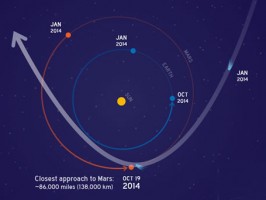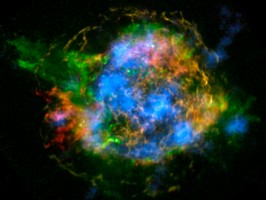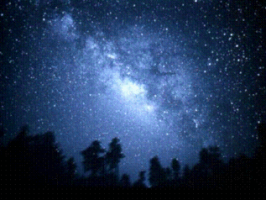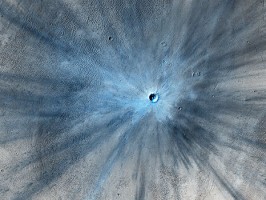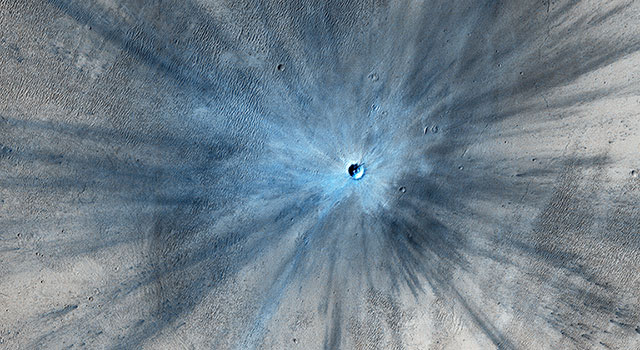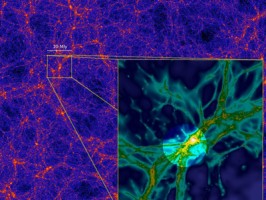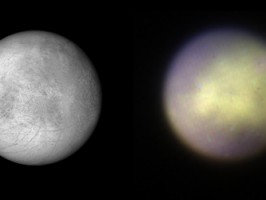আকাশ পর্যবেক্ষণ
মোঃ আবিদ খান
বসন্তকালের আকাশে কোন বিশেষ তারকা মন্ডল বা তারকা পুঞ্জ অবলোকন করতে হলে যখন চাঁদে আলো অনুপস্থিত এমন সময় শেষ পৃষ্ঠায় নির্দেশিত মানচিত্র নিয়ে উত্তর গোলার্ধের তারকামন্ডল বের করার জন্য প্রথমে মানচিত্রটির পূর্ব দিকটা ডান হাতে ধরে উত্তর দিকে মুখ করে দাড়ান। আবার দক্ষিণ গোলার্ধের তারকা মন্ডল সমুহ বের করার জন্য মানচিত্রটির পশ্চিম দিককে বাম হাতে ধরে দক্ষিণ দিকে মুখ করে দাড়ান। প্রথমে উজ্জ্বল নক্ষত্র গুলির সঙ্গে পরিচিত হোন। পরে উজ্জ্বল নক্ষত্র গুলির সাহায্য নিয়ে অন্যান্য নক্ষত্র বা নক্ষত্র মন্ডল খুজে বের করুন।
বসন্তকালের রাতের আকাশে ফেব্রুয়ারী, মার্চ এবং এপ্রিল মাসের উল্লেখযোগ্য নক্ষত্রমন্ডল গুলো সন্নিবেশ করা হয়েছে। এই মানচিত্রে ৩৫টি তারকা মন্ডলের প্রায় ৩২০ টি নক্ষত্রের অবস্থান দেখানো হয়েছে। নক্ষত্র মন্ডলী সমূহের উজ্জ্বল নক্ষত্রের সঙ্গে রেখা টেনে তাদের কাল্পনিক আকৃতি দেওয়া হয়েছে।
বসন্তকালের রাতের আকাশে উল্লেখ্যযোগ্য যে সমস্ত নক্ষত্র মন্ডল দেখা যাবে সে সমস্ত নক্ষত্র মন্ডলের বর্ণনা নিম্নে দেওয়া হলঃ
অরিগা (AURIGA): উত্তর আকাশে ALDEBARAN এর চেয়েও উজ্জ্বল একটি নক্ষত্র দেখা যাবে বৃষ রাশির ঠিক উত্তরে। নক্ষটির নাম ক্যাপেলা (CAPELLA), সমগ্র আকাশের ষষ্ঠ এবং অরিগা মন্ডলের প্রথম উজ্জ্বল নক্ষত্র। হালকা হলুদ রংয়ের তারাটির প্রভা ০.১। ক্যাপেলা তারাটির দক্ষিন দিকে ত্রিভুজের আকৃতিতে তিনটি ছোট নক্ষত্র দেখা যায়, যাদের কে একসঙ্গে “KIDS” বলে। ত্রিভুজটির উত্তর কোনের নক্ষত্রটির নাম এপসিউলন অরিগা। বিজ্ঞানীদের মতে এপসিউলন অরিগা এ পর্যন্ত দেখা অন্যতম বড় নক্ষত্র|সূর্য থেকে ৩২০০ আলোক বর্ষ দূরে অবস্থিত নক্ষত্রটির ব্যস ২০০০ মিলিয়ন মাইল। অরিগা নক্ষত্র মন্ডলে M36, M37, M38 নামে তিনটি মুক্ত স্তবক আছে।
Continue reading


